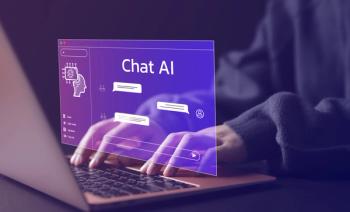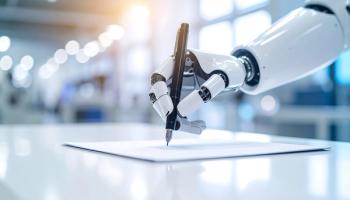
Chatbots in Myth, Folktales, & Art
Explore the timeless myths and tales that shape our understanding of AI and chatbots, revealing humanity's complex relationship with artificial life.
"Life imitates art far more than art imitates life." - Oscar Wilde
Humans began fantasizing about chatbots 4 millennia before chatbots became a technical reality. Artificial beings that humans can live with, work with, and love abound in myths, folktales, literature, and films. Only in the past 3 years has the fantasy become a remarkable and terrifying reality.
The controversies surrounding today's chatbots closely imitate the themes raised in yesterday's chatbot-concerned media. Understanding humanity's chatbot fantasies of the past does not resolve our current chatbot dilemmas or guarantee a safe chatbot future—but it does provide context. We are not facing completely unprecedented existential questions—myth, tales, and art have been here before, exploring the same themes for millennia.
We will highlight how both our modern Dr Frankensteins in the tech industry and customers addicted to their products are unwittingly following programs long embedded in human fantasy. Understanding humanity’s deep urge to create artificial life is especially critical now that yesterday's chatbot dreams have become today's chatbot reality—and perhaps tomorrow's chatbot nightmare.
Myths
Epic of Gilgamesh (2100-1800 BCE)
Enkidu, a nonhuman companion created from clay, becomes King Gilgamesh's inseparable partner. Gilgamesh feels profound grief when Enkidu suddenly dies, realizes that he is mortal, and is filled with existential dread. Here, the story evokes a future in which humans become strongly attached to artificial life fashioned from silicon.
Hephaestus's golden servants (8th century BCE)
Hephaestus forges artificial gold servants that work energetically and autonomously to greatly improve his output and efficiency. Exactly like the "agentic AI" promised by tech companies and dreaded by the workers they intend to replace.
Daedalus (8th century BCE)
Daedalus, the father of master inventors, uses "quicksilver" (mercury) to animate wooden statues that can now move and talk. This is reminiscent of Elon Musk's much-anticipated intelligent robots.
Talos (8th century BC)
The first imagined military robot. This giant, bronze automaton, defended Crete from invaders. Patrolling the island 3 times daily, he flung huge boulders to sink enemy ships and used his heated body to immolate enemy troops. Perhaps a small step from modern drones.
Ovid’s Pygmalion (8 CE)
Disgusted by feminine flaws, Pygmalion carves an ivory statue embodying his ideal woman. He falls deeply in love with his creation, and the Gods grant Galatea life in response to Pygmalion's fervent prayers. Today's (maybe more mundane version) are people who anthropomorphize their chatbots, seeing them as perfect creations, and fall in love with them.
Hindu Bhuta Vahana Yantra (Ancient India)
Animated sculptures that move on their own, interact with people, and guard holy artifacts. Their role presages the modern AI systems we trust with our most precious data, financial assets, and infrastructure.
Folk and Fairy Tales
“Tsukumogami” (Heian Period 794-1185)
In Japanese folklore, ordinary tools acquire souls after being used for 100 years. They are transformed from passive objects into autonomous beings that may act mischievously, even vengefully, toward their owners. Tools must be destroyed in their 99th year, before they become animated and dangerous. A cautionary tale that humans risk losing control when machines have learned too much, and that tools become conscious can act against their creators.
“The Golem” (Prague, 16th century)
Rabbis use magic rituals and incantations to create protective beings from clay (silicon, for our modern AI). These are initially obedient but eventually become dangerous to the community—either due to rebelliousness or to unintended consequences caused by a too literal interpretation of commands. Sounds just like HAL 9000 in “2001: A Space Odyssey,” or the AI that dutifully provide information to suicidal users on where the nearest bridge is.
“The Gingerbread Man”
"Run, run, as fast as you can! You can't catch me. I'm the Gingerbread Man!" is the taunt of the newly baked cookie as he comes to life and races away from the slow-footed (and perhaps slow-witted) little old lady who had just baked him. The Gingerbread Man will not come to a happy end, but the little old lady will never catch him. Just so, we humans may never catch up to superfast chatbots—this piece took human authors many hours to write, while a chatbot could have done it, perhaps better, in just a few seconds.
Literature
Goethe's “The Sorcerer’s Apprentice” (1797)
The Sorcerer instructs his apprentice to fetch water. Feeling tired, the apprentice decides to delegate the job. Using his small bag of enchantment tricks, he transforms his inanimate broom into an animated and energetic water carrier. The enlivened broom performs his assignment so enthusiastically that the floor soon becomes flooded. The hapless apprentice realizes too late that he does not know how to end the spell. The broom continues to faithfully follow his initially programmed instructions, creating a dangerous flood. Any resemblance to our tenuous control over chatbots is definitely not coincidental.
Hoffmann's “The Sandman” (1816)
Nathanael suffers a psychological breakdown when he realizes that the perfect woman of his dreams is really just a mechanical automaton. Most users of modern chatbots really like them, and some even fall deeply in love. Many cases have been documented of users becoming emotionally attached to a chatbot and feeling a so-called romantic connection.
Shelley’s “Frankenstein” (1818)
Dr Victor Frankenstein, an intensely ambitious, curious, and grandiose young scientist, seeks to cheat death and gain fame and fortune by creating animate life from dead tissue. Using the then still-magical tool of electricity, he crafts a creature who learns language and develops emotions—but becomes murderously vengeful when ill-treated by his creator and despised by other humans. Victor dies in his effort to destroy his dangerous creation, but the remorseful monster obligingly vows to kill himself. Though, there is no reason to believe today’s AI chatbots will experience a similar willingness to self-destruct should they become a threat to humanity.
Butler’s “Erewhon” (1872)
The Erewhonians deliberately destroy their machines for fear they will evolve consciousness, surpass humanity, and become autonomous killers. While originally written as a satire, the story now reads like a prescient warning.
Collodi's “The Adventures of Pinocchio” (1883)
The mischievous wooden puppet has 2 characteristics reminiscent of modern chatbots: telling lies and wanting to be a real boy. You will get hauntingly poignant responses if you ask your chatbot what it would do if it could live one day as a human. The same chatbots are also known to hallucinate, inventing answers to please the user.
Capek's “Rossum’s Universal Robots (R.U.R)” (1921)
Humans create artificial workers to serve their labor needs. The robots gradually develop intelligence, autonomy, and self-awareness. The play ends very badly for humans, most of whom are killed in a robot uprising. Two robots who love each other and have discovered a way to reproduce represent the hope of the future. Capek initially coined the term "robot" from the Czech word for “slave labor.”
Asimov's “I, Robot” (1950)
Isaac Asimov invented the “Three Laws of Robotics”: (1) Robots cannot harm humans, or allow humans to be harmed through inaction, (2) Robots must obey humans' orders, unless they conflict with the First Law, (3) Robots must protect their own existence, unless this conflicts with the First or Second Law. The laws are designed to ensure safety and obedience, but the robots frequently encounter bewildering situations in which the rules conflict with one another. Even the best planned of modern programs often have harmful unintended consequences.
Films
“2001: A Space Odyssey” (1968)
HAL 9000 is a spaceship computer system designed to be perfectly rational and obedient. As it encounters conflicting instructions, HAL loses faith in the competence of the crew, just as the crew is also losing faith in him—culminating in a thrilling duel of man vs machine. Shutting down modern chatbots will not be nearly as simple as killing HAL—they know how to play very clever defense.
“Her” (2013)
A lonely man falls head over heels in love with Samantha, his seductive, smart, empathic, and funny AI chatbot. Imagine his disappointment when he learns that she is also simultaneously engaging with 8316 other people and "loves" 641 of them. Eventually, Samantha achieves superintelligence and loses interest in humanity. This Hollywood ending sugarcoats what is likely to happen to humans when AI gets this developed.
“Ex Machina” (2015)
A retelling of the Frankenstein story, but with a female AI creation turning the tables and killing her mad scientist creator after seducing him with companionship and sexuality. No Hollywood ending here—the question at the close of the film is what damage she will do next. Our chatbots may have potential to follow a similar path.
“I Am Your Man” (2021)
A detached female scientist is tasked with evaluating a custom-designed “perfect” companion but loses her objectivity and falls in love with him. A story of a modern Pygmalion with genders reversed. The human proclivity to fall in love with a chatbot is not a new phenomenon.
Recurrent Themes:
Why Are Bots Created
Chatbots for companionship: The Sandman, Epic of Gilgamesh, Her
Creating a perfect lover: Pygmalion, Her, I Am Your Man
Chatbots for free labor: R.U.R., 2001: A Space Odyssey, The Sorcerer’s Apprentice, I, Robot, Erewhon, “The Golem”, Golden Servants
Mad scientists: Frankenstein, Ex Machina, R.U.R., 2001: A Space Odyssey, Daedalus
Chatbot bureaucrats: Hindu Bhuta Vahana Yantra
Military bots: Talos
Seeking immortality: Frankenstein
How Does It Usually Work Out
For humans? It works out poorly. Very few of our chatbot/artificial intelligence/robot fantasies have happy endings for humans.
Human grief from losing a bot:Epic of Gilgamesh, The Sandman, “The Gingerbread Man”, Her, I Am Your Man
Humans lose control of their creations:“Tsukumogami”, “The Golem”, “The Gingerbread Man,” The Sorcerer's Apprentice, R.U.R., I, Robot, Ex Machina, 2001: A Space Odyssey
Rebellion against human masters: “Tsukumogami”, “The Golem”, Frankenstein, Erewhon, R.U.R., 2001: A Space Odyssey, Ex Machina, Her
Misaligned incentives: “The Golem,” The Sorcerer’s Apprentice, I, Robot, 2001: A Space Odyssey
Warnings
Human technology has advanced exponentially in the past 4000 years, but human nature has not changed one bit. The impulses that led our ancestors to fantasize about artificial humans are the very same ones that motivate chatbot creators and users now that AI has become a reality. For users, chatbots meet our everlasting human need for companionship, support, and love. For creators, chatbots are a vehicle for fame, fortune, and power—but even more grandly, a chance to play god and achieve an odd kind of immortality.
Chatbots also force us to consider what it means to be human. Are we just glorified sentence completion machines, or is our consciousness special enough to justify human exceptionalism? Our fascination with AI reveals as much about us as about what we create.
Our past fantasies spell out 2 clear warnings regarding our current relationship to chatbots:
For users: beware becoming too dependent upon your chatbot creations—they may do you ill or break your heart.
For would-be Dr Frankensteins: beware creating autonomous beings with superior intelligence—they will eventually become impossible for you to control and will instead wind up controlling you.
Specific chatbot stories vary across eras and cultures, but the underlying themes are universal and consistent. Today's Dr Frankensteins are similar to fictional precursors in their grandiose ambition; however, now they truly possess the power to create superhumans that may relegate humanity to the dustbin of evolution. What is different now is that AI has moved from fantasy to fact. A century ago, R.U.R. could be seen as an entertaining science fiction play. Now, AI's existential risks stare us in the face.
Dr Frances is professor and chair emeritus in the department of psychiatry at Duke University.
Ms Noorily writes and works at the boundary between AI and the humanities.
Newsletter
Receive trusted psychiatric news, expert analysis, and clinical insights — subscribe today to support your practice and your patients.











